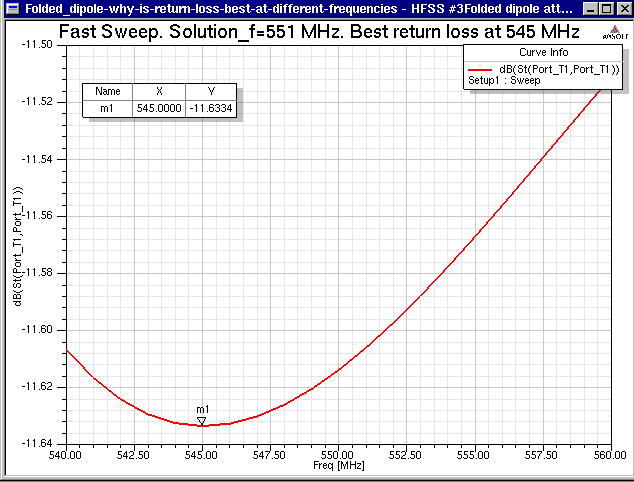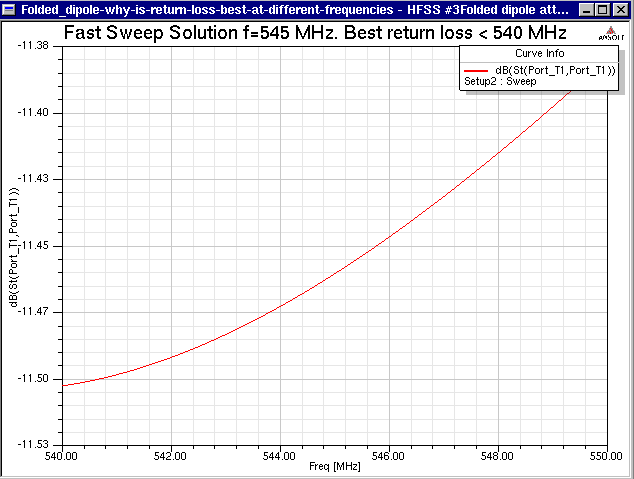HFSS issue - issues with fast-sweep, solution frequency.
I estimated this would be at 551 MHz, based on some other software, so I
1) Did a fast-sweep in HFSS 14 and found the return loss to be maximum at 545 MHz. (Setup 1 in the attached file)

2) Then I decided to try to get a more accurate figure, by using smaller steps. I then set the solution frequency to be 545 MHz (Setup #2). I did this over the range 540-550 MHz, since I thought the best return loss was around 545 MHz. However, the graph shows the best return loss as being under 540 MHz, yet the first sweep had shown it to be 545 MHz. That"s a difference of at least 5 MHz.

3) Sweep #4 shows a discrete sweep.

This indicates the best return loss is at 538 MHz, so is 8 MHz away from the first figure I got.
Is this sort of thing to be expected? Is the fact the first figure differs so much from the others due to the fact the solution frequency was not as accurate?
It"s hard to know when to trust the results in this case. I' expect the discrete sweep might be the more accurate result, but are still not sure whether to trust it.
Deborah
Hi Debora,
The HFSS fast sweep and discrete sweep is actually not much difference.
From my experience, usually it's better to use fast sweep for faster simulation process. Discrete sweep takes a really longer time.
When you use fast sweep in HFSS, your solution frequency must be in the middle of your bandwidth meaning for example, if your frequency range (bandwidth) = 0 GHz to 10 GHz then your solution frequency is 5GHz.
But that doesn't mean it's the most accurate solution, but what it means, that all the solution results is based on 5GHz simulation results.
Technically, it doesn't really matter if you use 4GHz, the results simply imply the simulated results is based on 4GHz.
If you want faster and almost accurate result, you can use fast sweep at 0.1 GHz step. I think it's adequate enough.
Remember though, your simulation results doesn't mean it's entirely true or 100% accurate because if you measure your antenna using a vector network analyzer and compare with your simulation results, you will notice discrepancies and by the way, different simulation software gives different results.
What we want from the results is the approximations...and see whether our antenna design fits the criteria for the purpose we want.
Hope this helps.
